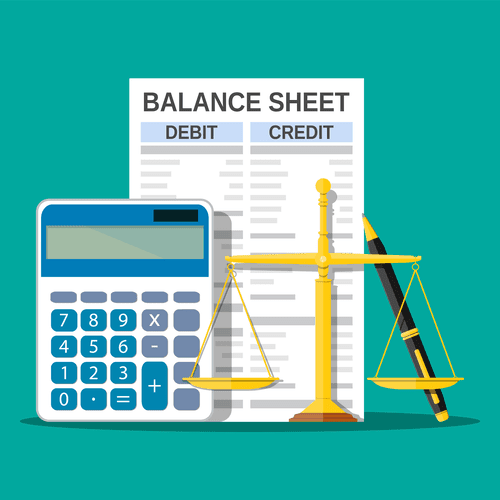
The outstandingbalance note payable during the current period remains a noncurrentnote payable. On the balance sheet, the current portion of thenoncurrent liability is separated from the remaining noncurrentliability. No journal entry is required for this distinction, butsome companies choose to show the transfer from a noncurrentliability to a current liability. These systems handle complex transactions and provide real-time updates to financial statements, reflecting changes in unearned revenue as obligations are fulfilled.
Unearned Revenue Journal Entries and Examples
Since unearned revenue is a liability, not an asset, its classification ensures that financial reporting accurately reflects a company’s outstanding obligations. Unearned revenue represents a liability for a business, signifying an obligation to provide the goods or services that have been paid for in advance. Think of it as a promise – the business promises to deliver something in the future in exchange for the upfront payment. In this journal entry, total liabilities on the balance sheet decrease by $5,000 while total revenues on the income statement increase by $5,000. Likewise, the remaining balance of unearned rent is $10,000 (15,000 – 5,000) as of January 31, 2021. Unearned rent is a liability account, in which its normal balance is on the credit side.

Accrued income
However, it creates an obligation to deliver timely services or goods to the buyer. The most common example of unearned revenue is from SAAS companies offering software and application subscriptions to their customers. As the company delivers, unearned revenue moves from liabilities to revenue is unearned rent a current liability on the income statement. Having established the concept of unearned revenue, we will now explore its calculation method.
Common Mistakes
It must recognize only the portion earned each month as the service is delivered. Receiving payment before earning it creates an obligation to fulfill in the future, thus requiring the company to report it on the balance sheet as a liability. Let’s explore what unearned revenue really means, why it appears on the balance sheet, and how it shapes financial analysis. In the case of accounts receivable, the remaining obligation is for the customer to fulfill their obligation to make the cash payment to the company in order to complete the transaction. If you have noticed, what we are actually doing here is making sure that the earned part is included in income and the unearned part into liability. The adjusting entry will always depend upon the method used when the initial entry was made.

Is unearned revenue the same as deferred revenue?
On December 31, 2021, the end of the accounting period, 1/3 of the rent received has already been earned (prorated over 3 months). https://www.bookstime.com/articles/cash-flow-from-assets-definition-and-formula In this journal entry, both total assets and liabilities on the balance sheet increase by $15,000. In the eye of balance, having received payment in advance doesn’t mean a profit. The landlord has yet to uphold the agreement’s end – provide rental service. We kick things off by defining the central player in our discussion – unearned rent. Unearned rent refers to the amount that a tenant pays to a landlord for a future period of occupation.
- Terms of the loan require equal annualprincipal repayments of $10,000 for the next ten years.
- Unearned revenue represents payments received before a company fulfills its obligations.
- It also adheres to the matching principle, aligning revenue with the period in which services are provided.
- The proper handling of these funds not only ensures compliance with accounting standards but also impacts the accuracy of reported earnings.
- CFI is the global institution behind the financial modeling and valuation analyst FMVA® Designation.
- An invoice from the supplier (such as the one shown in Figure 12.2) detailing the purchase, credit terms, invoicedate, and shipping arrangements will suffice for this contractualrelationship.

When we talk about the effects of unearned rent on a balance sheet, keep in mind that we refer to its impact on these three elements. Conversely, companies might use accounts payable as a way to boost their cash. Companies might try to lengthen the terms or the time required to pay off the payables to their suppliers as a way to boost their cash flow in the short how is sales tax calculated term.

Let’s explore how unearned rent is handled in real estate, commercial property leasing, and vacation rentals. Also, if cash is expected to be tight within the next year, the company might miss its dividend payment—or at least not increase its dividend. Dividends are cash payments from companies to their shareholders as a reward for investing in their stock. Accrued revenue is a common form of income for most conventional businesses. Most businesses provide upfront work or goods before invoicing their clients. So, as the seller delivers on the performance promise, the unearned revenue is converted into earned revenue.
Assets may be subject to depreciation or amortization based on their useful life, aligning expenses with revenue generation. Unearned revenue, however, transitions to earned revenue as obligations are fulfilled. This transformation requires careful monitoring to ensure financial statements accurately reflect the company’s performance and obligations. Correctly accounting for unearned service revenue is essential in industries that rely on advance billing and long-term contracts. It safeguards the integrity of financial statements and builds trust with stakeholders. The concept of unearned revenue is rooted in accrual accounting, which recognizes revenues and expenses when they are incurred, not necessarily when cash is exchanged.
